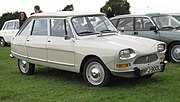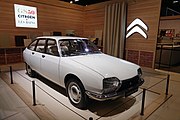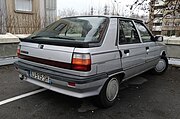- Citroën DS (1967) "Nouveau Visage"
- Citroën Ami 8 (1969)
- Citroën SM (1970) 1972 Motor Trend Car of the Year.
- Citroën GS [51] (1970) 1971 European Car of the Year.
- Citroën CX [52] (1974) 1975 European Car of the Year.
- Renault Alpine A310 V6 (1976)
- Renault Fuego (1980)
- Renault 11 [54] (1983)
- Renault 25 [55] (1984)
- Alfa Romeo SZ [56] (1989)
Related Research Articles

Citroën is a French automobile brand. The "Automobiles Citroën" manufacturing company was founded in 4 June 1919 by André Citroën. Citroën has been owned by Stellantis since 2021 and previously was part of the PSA Group after Peugeot acquired 89.95% share in 1976. Citroën's head office is located in the Stellantis Poissy Plant in Saint-Ouen-sur-Seine since 2021 and its offices studies and research in Vélizy-Villacoublay, Poissy (CEMR), Carrières-sous-Poissy and Sochaux-Montbéliard.

The Citroën SM is a high-performance coupé produced by the French manufacturer Citroën from 1970 to 1975. The SM placed third in the 1971 European Car of the Year contest, trailing its stablemate Citroën GS, and won the 1972 Motor Trend Car of the Year award in the U.S.

Simca was a French automaker, founded in November 1934 by Fiat S.p.A. and directed from July 1935 to May 1963 by Italian Henri Pigozzi. Simca was affiliated with Fiat and, after Simca bought Ford's French subsidiary, became increasingly controlled by Chrysler. In 1970, Simca became a brand of Chrysler's European business, ending its period as an independent company. Simca disappeared in 1978, when Chrysler divested its European operations to another French automaker, PSA Peugeot Citroën. PSA replaced the Simca brand with Talbot after a short period when some models were badged as Simca-Talbots.

The Citroën DS is a front mid-engined, front-wheel drive executive car manufactured and marketed by Citroën from 1955 to 1975, in fastback/sedan, wagon/estate, and convertible body configurations, across three series of one generation.

The Citroën Visa is a five-door, front-engine, front wheel drive supermini manufactured and marketed by Citroën from 1978 to 1988 in gasoline and diesel variants. 1,254,390 examples were ultimately manufactured over a single generation, with a single facelift (1981). China has also assembled the car as the Liuzhou Wuling LZW 7100 minicar. Production started in 1991 and finished in 1994.

The Citroën GS is a front-engine, front-drive, four or five door, five passenger family car manufactured and marketed by Citroën in two series: for model years 1970–1979 in fastback saloon and estate bodystyles and subsequently as the GSA for model years 1980–1986 in hatchback and estate body styles – the latter after a facelift. Combined production reached approximately 2.5 million.

The Citroën CX is a large, front-engined, front-wheel-drive executive car manufactured and marketed by Citroën from 1974 to 1991. Production models were either a standard wheelbase or a stretched, more luxurious, four-door fastback saloon, as well as a station wagon (estate), on the longer wheelbase. The CX is known for its hydropneumatic self-leveling suspension system, and its low 0.36 drag coefficient, normally noted as a vehicle's in French. Restyled as 'CX', the model name underscored this.

The Oltcit Club was a supermini produced between 1981 and 1991 and developed in co-operation by Citroën of France and Oltcit, a joint venture company with the Romanian government.

The Citroën Dyane is an economy family car produced by the French automaker Citroën from 1967 to 1983. The Dyane's design remained almost completely based on the Citroën 2CV and its underpinnings, but at the same time received almost all-new body panels, distinguished by more straight, angular overall features. The rear introduced a prominent large hatchback, while the modernized front wings now integrated the headlights.

The Renault 25 is an executive car produced by the French automaker Renault from 1983 to 1992.

The Citroën Ami is a four-door, front-wheel drive economy (B-segment) family car, manufactured and marketed by Citroën from 1961 to 1978.
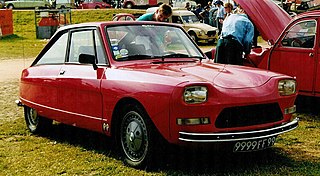
The Citroën M35 was a coupé derived from the Ami 8, and equipped with a Wankel engine and a hydropneumatic suspension. The bodies were produced by Heuliez from 1969 to 1971.
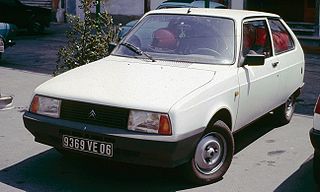
The Citroën Prototype Y was a project to develop a replacement for the Citroën Ami, conducted by Citroën in the early seventies. It built on the Citroën G-mini and EN101 projects. It was superseded by project Citroën VD.

In 1964, Citroën released a range of trucks from 3.5 to 8 ton capacity, styled by Flaminio Bertoni, the Italian sculptor also responsible for the Citroën 2CV, DS, Ami 6, and Traction Avant cars. In production until 1974, the medium-duty truck was intended as the replacement for the older Citroën U23 trucks. The U23, however, was kept in production alongside its replacement until 1969, as they were still profitable in spite of their age.
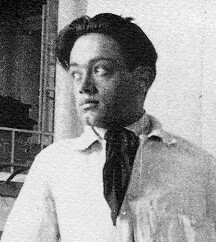
Flaminio Bertoni was an Italian automobile designer from the years preceding World War II until his death in 1964. Before his work in industrial design, Bertoni was a sculptor.
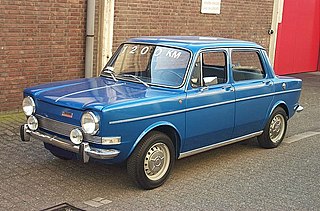
The Simca 1000, or Simca Mille in French, is a small, boxy rear-engined four-door saloon, manufactured for 18 years by French automaker Simca, from 1961 to 1978.
France was a pioneer in the automotive industry and is the 11th-largest automobile manufacturer in the world by 2015 unit production and the third-largest in Europe. It had consistently been the 4th-largest from the end of World War II up to 2000. It is 16% of sales of French manufactured products.
Gaston Juchet was a French engineer, known for being the chief designer of Renault between 1963 and 1975 and again between 1984 and 1987.
René Ducassou-Péhau was a French automobile designer. He was born in Basque country, and died in Labourd. He is best known for his work with car manufacturer Panhard.
Michel Têtu, born 6 August 1941, is a French engineer best known as a designer of racing sports cars and Formula 1 (F1) cars for marques such as Ligier, Alfa Romeo, and Renault.
References
- ↑ "Décret du 31 décembre 2004 portant promotion et nomination" (in French). Retrieved 15 June 2023.
- ↑ Caspers, Markus (26 September 2016). Designing Motion: Automotive Designers 1890 to 1990. Birkhäuser. p. 149. ISBN 978-3035609820.
- 1 2 3 4 5 Maak, Niklas. "Autopilot #49: Vive la Berline". www.dear-magazin.de.
- 1 2 3 4 5 6 7 Guenzel, Peter (28 October 2017). "Robert Opron". Octane.
- 1 2 3 4 5 6 7 8 9 "Robert Opron". leroux.andre.free.fr.
- ↑ Böttcher, Gerrit (July–September 2007). "Robert Opron – zum Anlass seines 75 zigsten Geburtstages" [Robert Opron – on the occasion of his 75th birthday](PDF). Citroën-Clubzeitung. No. 76. Citroën-SM-Club Deutschland e. V. pp. 7–8.
- ↑ Siner, Neil (15 July 2016). "Robert Opron: The Art of the Automobile". www.influx.co.uk.
- 1 2 "Livres – Robert Opron, l'automobile et l'art". Archived from the original on 21 December 2018. Retrieved 1 March 2020.
- 1 2 "Robert Opron: design futuristico" [Robert Opron: futuristic design]. wheels.iconmagazine.it (in Italian). 1 June 2017.
- 1 2 3 4 Parker, Johni (17 August 2014). "Citroën Head of Design Robert Opron was Defiant, Perseverant". petrolicious.com.
- 1 2 3 Bird, Guy (3 October 2017). "Robert Opron Giant of French car design interviewed". drive-my.com.
- ↑ González, Ignacio Ferreiro (12 September 2017). "Regreso al futuro" [Back to the future]. Extra Voz – Suplemento De Motor. La Voz de Galicia.
- ↑ Lawson, Bryan (14 December 2005). How Designers Think – The Design Process Demystified (PDF) (4 ed.). Architectural Press. p. 256. ISBN 978-0-7506-6077-8.
- ↑ Clausager, Anders Ditlev (23 June 2021). "Robert Opron obituary". The Guardian. Retrieved 23 June 2021.
- ↑ Veldhuis, Max (5 April 2021). "Franse auto-ontwerper Robert Opron overleden" [French car designer Robert Opron passed away] (in Dutch).
- ↑ "Opron 50 ans de style – 11 mai 2002" [Opron – 50 years of style - 11 May 2002]. Archived from the original on 16 February 2013. Retrieved 27 February 2020.
- 1 2 3 4 5 6 Pijlman, Peter I. (February 2002). "Citroën – the chamber orchestra". Robert Opron – l'Automobile et l'Art (PDF). Netherlands: Sagitta Productions. ISBN 978-9051790245. Archived from the original (PDF) on 28 December 2003. Retrieved 28 February 2020.
- 1 2 3 Cole, Lance (1 August 2014). Citroën: The Complete Story (PDF). The Crowood Press UK. ISBN 978-1847976598.
- ↑ Renault, Alex (22 October 2015). "Simca Fulgur (1958)". lautomobileancienne.com.
- 1 2 3 "Designers : Robert Opron, le designer français le plus talentueux et prolifique" [Designers: Robert Opron, the most talented and prolific French designer]. absolutelycars.wordpress.com. 22 February 2020.
- ↑ Tatra87 (7 May 2019). "Automotive History: French Deadly Sins (M.C. Escher Edition, Part 1): Fiat + Ford + Chrysler + Rootes = Simca, The Impossible Equation". www.curbsideclassic.com.
{{cite web}}: CS1 maint: numeric names: authors list (link) - ↑ Patrick, Sean (16 November 2014). "Theme : Books – Robert Opron : L'Automobile et l'Art by Peter J Piljman". driventowrite.com.
- ↑ "Renault Espace had almost been a Peugeot". amklassiek.nl. 11 August 2015.
- ↑ Marsh, Julian (2005). "Citroën G-mini prototype and projet EN101". www.citroenet.org.uk.
- ↑ Marsh, Julian (2005). "Citroën Belphégor 350, 370, 450, 480, 600, 700, 800 and 850 trucks". www.citroenet.org.uk.
- ↑ "Citroën N et P "Belphegor" : le poids lourd fantôme" [Citroën N and P "Belphegor": the phantom heavyweight]. www.carjager.com. 6 August 2017.
- ↑ Ciferri, Luca (7 May 2001). "Who designed important cars in history?". europe.autonews.com.
- 1 2 Bonnaud, Christophe (19 June 2019). "ENGLISH – Archives : the surprising GS berlinette from Chapron". lignesauto.fr.
- ↑ "Model — Pininfarina BMC 1800 Berlina Aerodinamica 1967". www.coachbuild.com. 29 July 2017.
- ↑ "Design Match for the Citroën CX?". citroenvie.com. 3 January 2018.
- ↑ Robinson, Peter (2002). "The Pininfarina 1800". www.landcrab.net.
- ↑ "The 17-year "Stopgap": Citroën Ami 8". oldmotors.net. 28 August 2019.
- ↑ Marsh, Julian (1996). "Projet M – Citroën Ami 6 prototypes and Ami 8". www.citroenet.org.uk.
- ↑ Petrány, Máté (31 January 2020). "The majestic Citroën SM celebrates its 50th anniversary in Paris". www.hagerty.com.
- ↑ "DS Automobiles Celebrates the SM's Jubilee at Retromobile". 3 February 2020.
- ↑ Marsh, Julian; Cass, Brian (2003). "Projet L". www.citroenet.org.uk.
- ↑ "Alpine: A Brief History". bringatrailer.com. 9 April 2018.
- ↑ Bonnaud, Christophe (6 February 2019). "Quand Renault inventait la Panda… avant Giugiaro !" [When Renault invented the Panda ... before Giugiaro!] (in French).
- ↑ "Gaston Juchet Designer" (in French). 14 June 2016.
- ↑ LaChance, David (May 2010). "1982-1985 Renault Fuego". Hemmings Motor News.
- ↑ Greison, Jakob (18 January 2018). "1980 Renault Alpine A310". www.bonhams.com.
- ↑ "AMC and Renault's Alliance". oldmotors.net. 27 May 2019.
- ↑ "Gaston Juchet : talentueux et modeste" [Gaston Juchet: talented and modest]. renaultconcepts.online.fr. 28 April 2017.
- 1 2 "Giorgetto Giugiaro". leroux.andre.free.fr (in French).
- ↑ Bonnaud, Christophe (3 December 2019). "ENGLISH – X29 Project: when Gandini wanted to seduce Robert Opron".
- ↑ "Renault Magnum – Conceptual thinking". losangemagazine.com. December 2019 – February 2020.
- ↑ "Renault Premier – The First, the Last". losangemagazine.com. March–May 2018.
- ↑ Golseth, Andrew (11 October 2017). "1990 Alfa Romeo SZ ($105,000)". petrolicious.com.
- 1 2 Classic Car: The Definitive Visual History. DK. 13 September 2016. pp. 292–293. ISBN 978-1465453396.
- ↑ Meunier, Nicolas (19 September 2013). "Dué II : la voiture sans permis low-cost se renouvelle" [Dué II: the low-cost license-free car is renewed]. www.challenges.fr.
- ↑ Cole, Lance (27 February 2005). "Citroen GS". The Independent. Retrieved 1 April 2012.
- ↑ "Unique Citroens on show". Classic & Performance Car. 5 October 2009. Archived from the original on 12 December 2009. Retrieved 1 April 2012.
- ↑ "Renault: A look to the past". Renault Freaks Online. Archived from the original on 22 April 2009.
- ↑ "Histoire". www.renault-9-11.fr (in French).
- ↑ "1984-1992 Renault 25". Classic & Performance Car. Archived from the original on 18 October 2013. Retrieved 1 April 2012.
- ↑ Perkins, Chris (25 October 2017). "You Must Buy This 1991 Alfa Romeo SZ". www.roadandtrack.com.

